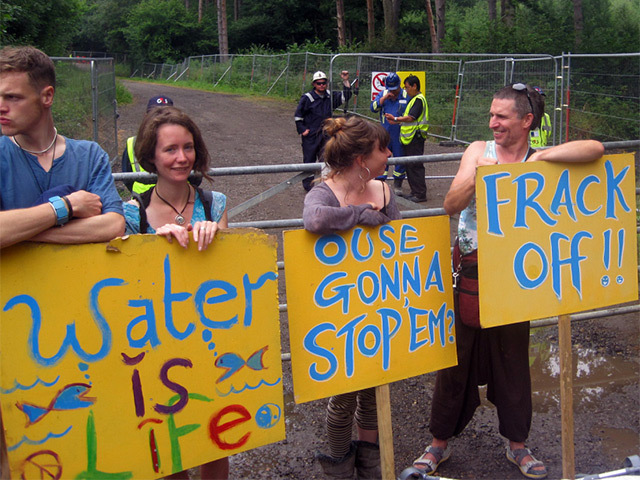
“Dirty energy company, Dart Energy, is preparing to get the green light for a dangerous new way to extract fossil fuels. They want planning permission to turn Falkirk in the heart of Scotland into a commercial ‘coalbed methane field’.”
So claims the web-based petitioning organisation 38 Degrees.
It goes on to claim: “If they get the go-ahead in Falkirk – fracking is one step closer to becoming a commercial reality – and the decision is likely to set a precedent for the rest of the UK. But, if we win, it will be a landmark case in the fight against dirty energy.”
38 Degrees claims too that the local community have fought back.
“They’ve fought for a pause in the planning application, and they’ve now secured a public inquiry at which the plans will be put on trial, set to begin in early March.
“If they win, Dart Energy’s planning application will be thrown out and it could stop their dirty gas field for good.”
According to 38 Degrees, the “whole community” has rallied together and has raised just over £15,000 from small donations of just a few pounds to fund their legal case.
“But they’re up against an opponent and an industry with bottomless pockets and the best legal support money can buy. Their £15,000 just won’t be enough to build the strongest legal case needed to win,” whines the petitioning body.
“They need £50,000 in total to be able to present the strongest case involving the best experts; a case strong enough to win.”
Jamie Mackenzie Hamilton from the local campaign group is claimed to have said: “It’s a real David and Goliath situation. We are in a very strong position right now, and if we can put forward the best possible case, then there’s a genuine likelihood we can win this.”
For the uninitiated, coalbed methane (CBM), or coal-seam gas (CSG), derives from coal seams and was regarded as a hazard to coal miners.
But today it is regarded as a valuable resource to be exploited . . . a halfway house between traditional hydrocarbons and so-called green energy.
Dart Energy through Composite Energy which it acquired in 2011, was involved in trials to supply Longannet Power Station with quantities of CSG from an extended reach well. That was around 2005-06.
CSG extraction is well developed in the US (more than 60-years track record) and is advancing in Australia, though there are environment-related issues associated with both that must be addressed, including the risk of groundwater contamination, however, whether similar issues will arise in the UK, where the first well was drilled 21 years ago, is not clear as full-scale commercial production has so far not been achieved.
This is Dart’s objective with its site near Aith, which is heritage Composite and where it is understood fracking will not be employed to enable production wells to flow.
The company had struck a five-year supply deal in 2011 with Scotia Gas Networks that was estimated at the time to have been worth up to £300million.
But with Dart now at the mercy of orchestrated protests from the Falkirk area and with the final decision on whether to allow exploitation residing with the Scottish government, it is far from clear whether this enterprise will ever get under way.
If Dart loses the battle, there will be serious implications for Reach and its aspirations, let alone any other companies that may currently nurse the idea of opening chapter two of the central belt energy story more than 60 years after the first close in the early 1960s, just at the genesis of the North Sea oil and gas industry.
Recommended for you
